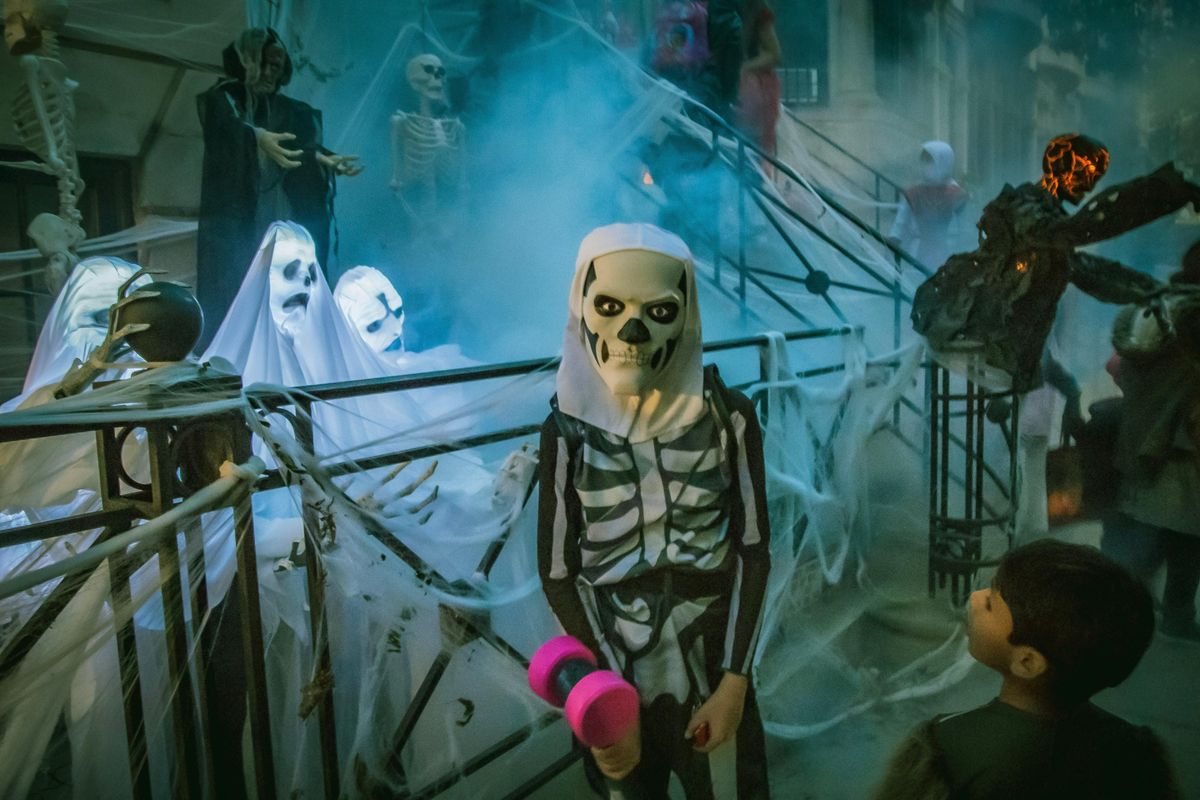Yes, I still take my teen trick-or-treating, costume and all
Childhood lasts such a short time, let them eat candy.

Yes, I still take my teen trick-or-treating, costume and all.
Every year people ask how old is too old for trick-or-treating. Maybe they're looking for their own cut-off on who to give candy to or maybe they're asking about their own kids. Halloween is just around the corner and my 14-year-old asked me to take him to get a costume for trick-or-treating, and I'm happy to do so. Mom groups are often encouraging people to give candy to the big kids too, and while I personally don't believe 14 is too old, I do know some people do.
My older son stopped trick-or-treating around 15 but he still walks with the family while we take the youngest out. If he decided that he wanted to dress up and go knock on doors, I wouldn't stand in his way. It's not because they need free candy, they don't. In fact, one year I was too exhausted and pregnant to take them out so I bought several bags of candy and dumped them in the middle of the bed so they could divvy it up. Trick-or-treating gives them a chance to just be kids.
 Photo by Jeffrey Grospe on Unsplash
Photo by Jeffrey Grospe on UnsplashTrick-or-treating typically entails a pretty decent amount of exercise and a few hours of being unplugged and socializing with your family and others in the neighborhood. Teens are inundated with the news, social issues, popularity contests and, of course, the social media platforms they're getting all this information from, so unplugging is a good thing.
We don't have to use too much of our imagination to consider the trouble teens could be getting into on Halloween instead of dressing up like zombies and getting free candy. When I was a teenager, kids were sneaking into their parents' alcohol stash, getting drunk and egging people's houses. So when my nearly six-foot-tall teenager asks to come trick-or-treating with his 4-year-old brother, I will always eagerly say yes.
I'll buy the plague doctor costume or the creepy mask and fingerless gloves for a few hours of childhood. It's the one night a year they don't have to worry about lockdown drills or what achievements they want to attain, unless that achievement is getting candy. I hope that when neighborhoods see teenagers dressed up holding out their bag or pillow case that they ask them about their costume and if they saw the haunted house down the street. At the very least, I hope they wish them a good night without scolding them for being too old.
A radio station, Lite 98.7 WLZW asked its audience, "What's the age that kids should stop trick-or-treating?" The answers will comfort the hearts of parents that may have been concerned. Alyssa Flemming responded, "Whenever they want! I give huge handfuls to the teens that stop by, and I usually dump the last of the bucket into a teen's bag when I'm done for the night. I'd rather they be out being kids, and trick or treating than drinking or smoking!"
Renee Werner Laws replied to the radio station's question with, "I went out until I was 18. Now my youngest is 12 and I hate the thought of him wanting to ever stop. The world is awful, let the kids hold onto a piece of childhood as long as they can."
It seems that the overwhelming majority of commenters are excited for teens to show up at their door dressed for Halloween, and my kid will be one of them. Let kids be kids as long as possible, they only get one childhood.
- 1000 people throw Halloween party for a boy with terminal cancer ... ›
- Scary Halloween decorations - Upworthy ›
- Three-year-old took her creepy Halloween doll to Disney World ... ›
- Gen Xer explains 'garbage bag' costumes - Upworthy ›
- A cop explains why it's unsafe not to answer the door when a stranger knocks - Upworthy ›
- Parenting coach says ditch your instincts when dealing with teens - Upworthy ›
- Kids are trick-or-treating at nursing homes, and the reactions are absolutely joyous - Upworthy ›
- 3 tips for a Halloween visit to senior living homes that kids and adults both will cherish - Upworthy ›

